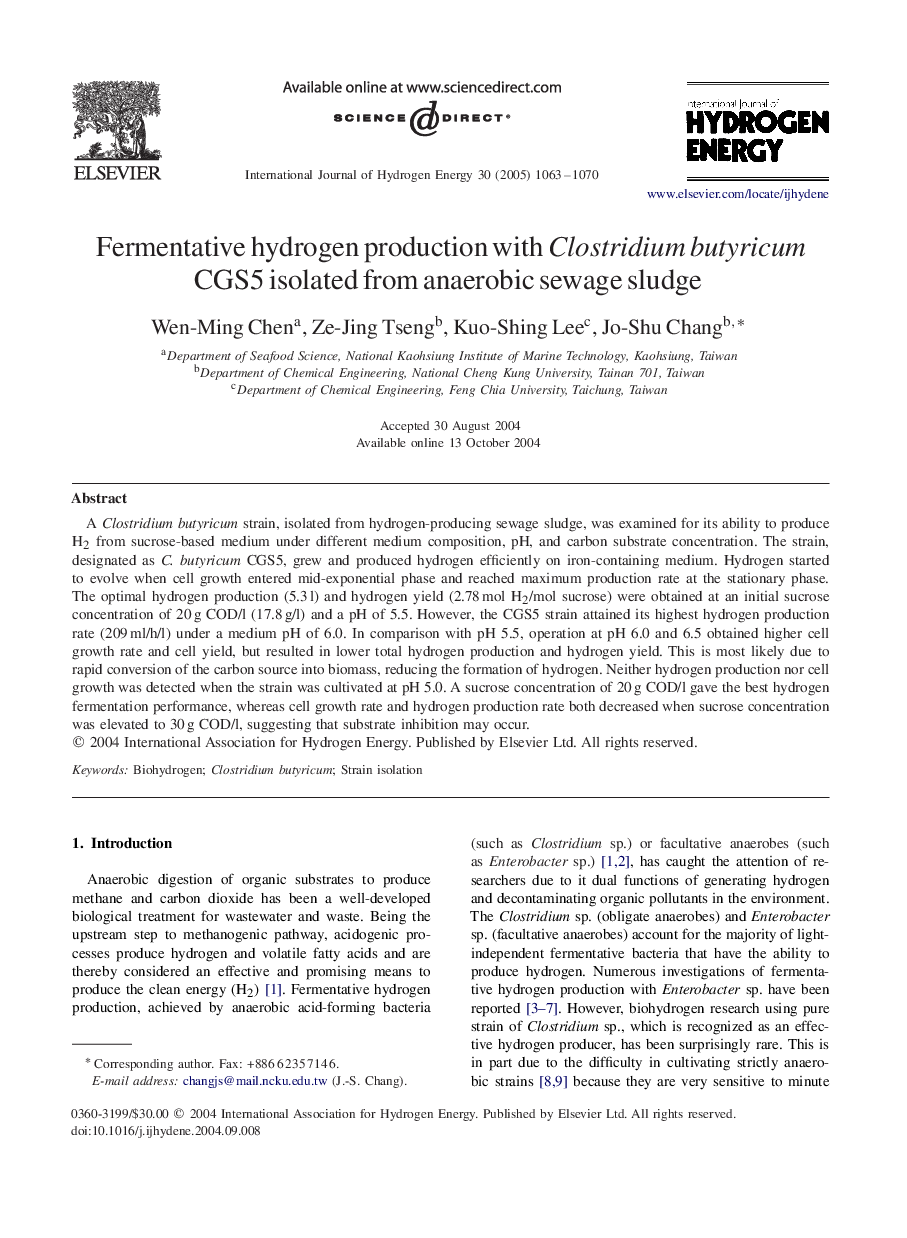| Article ID | Journal | Published Year | Pages | File Type |
|---|---|---|---|---|
| 9759251 | International Journal of Hydrogen Energy | 2005 | 8 Pages |
Abstract
A Clostridium butyricum strain, isolated from hydrogen-producing sewage sludge, was examined for its ability to produce H2 from sucrose-based medium under different medium composition, pH, and carbon substrate concentration. The strain, designated as C. butyricum CGS5, grew and produced hydrogen efficiently on iron-containing medium. Hydrogen started to evolve when cell growth entered mid-exponential phase and reached maximum production rate at the stationary phase. The optimal hydrogen production (5.3Â l) and hydrogen yield (2.78Â mol H2/mol sucrose) were obtained at an initial sucrose concentration of 20Â g COD/l (17.8Â g/l) and a pH of 5.5. However, the CGS5 strain attained its highest hydrogen production rate (209Â ml/h/l) under a medium pH of 6.0. In comparison with pH 5.5, operation at pH 6.0 and 6.5 obtained higher cell growth rate and cell yield, but resulted in lower total hydrogen production and hydrogen yield. This is most likely due to rapid conversion of the carbon source into biomass, reducing the formation of hydrogen. Neither hydrogen production nor cell growth was detected when the strain was cultivated at pH 5.0. A sucrose concentration of 20Â g COD/l gave the best hydrogen fermentation performance, whereas cell growth rate and hydrogen production rate both decreased when sucrose concentration was elevated to 30Â g COD/l, suggesting that substrate inhibition may occur.
Related Topics
Physical Sciences and Engineering
Chemistry
Electrochemistry
Authors
Wen-Ming Chen, Ze-Jing Tseng, Kuo-Shing Lee, Jo-Shu Chang,
